Patel is an Indian surname or title, predominantly found in the state of Gujarat, representing the community of land-owning farmers and later businessmen, agriculturalists and merchants. Traditionally the title is a status name referring to the village chieftains during medieval times, and was later retained as successive generations stemmed out into communities of landowners. Circa 2015 there are roughly 500,000 Patels outside India, including about 150,000 in the United Kingdom and about 150,000 in the United States. As of the 2000 U.S. Census, yearly 1 in 10 people of Indian origin in the US is a Patel.
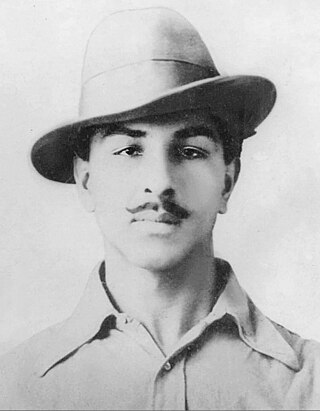
Bhagat Singh was an Indian anti-colonial revolutionary, who participated in the mistaken murder of a junior British police officer in December 1928 in what was to be retaliation for the death of an Indian nationalist. He later took part in a largely symbolic bombing of the Central Legislative Assembly in Delhi and a hunger strike in jail, which—on the back of sympathetic coverage in Indian-owned newspapers—turned him into a household name in the Punjab region, and after his execution at age 23 into a martyr and folk hero in Northern India. Borrowing ideas from Bolshevism and anarchism, the charismatic Bhagat Singh electrified a growing militancy in India in the 1930s, and prompted urgent introspection within the Indian National Congress's nonviolent but eventually successful campaign for India's independence.
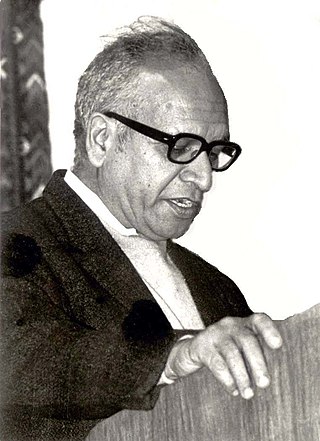
Bipan Chandra was an Indian historian, specialising in economic and political history of modern India. An emeritus professor of modern history at Jawaharlal Nehru University, he specialized on the Indian independence movement and is considered a leading scholar on Mahatma Gandhi. He authored several books, including The Rise and Growth of Economic Nationalism.

The Legend of Bhagat Singh is a 2002 Indian Hindi-language biographical period film directed by Rajkumar Santoshi. The film is about Bhagat Singh, a revolutionary who fought for Indian independence along with fellow members of the Hindustan Socialist Republican Association. It features Ajay Devgan as the titular character along with Sushant Singh, D. Santosh and Akhilendra Mishra as the other lead characters. Raj Babbar, Farida Jalal and Amrita Rao play supporting roles. The film chronicles Singh's life from his childhood where he witnesses the Jallianwala Bagh massacre until the day he was hanged to death before the official trial dated 24 March 1931.
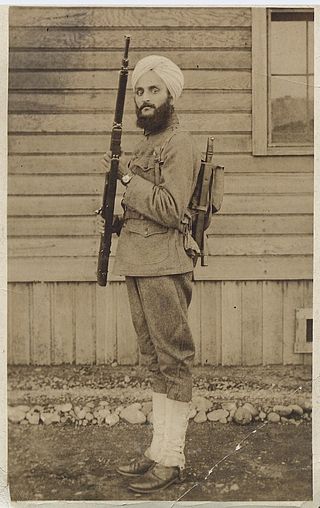
Bhagat Singh Thind was an Indian diaspora writer and lecturer on spirituality who served in the United States Army during World War I and was involved in a Supreme Court case over the right of Indian people to obtain United States citizenship. He was among a group of men of Indian ancestry who attempted to claim he was White and naturalize under federal naturalization law.

Subramanian Swamy is an Indian politician, economist and statistician. Before joining politics, he was a professor of Mathematical Economics at the Indian Institute of Technology, Delhi. He is known for his Hindu nationalist views. Swamy was a member of the Planning Commission of India and was a Cabinet Minister in the Chandra Shekhar government. Between 1994 and 1996, Swamy was Chairman of the Commission on Labour Standards and International Trade under former Prime Minister P. V. Narasimha Rao. Swamy was a long-time member of the Janata Party, serving as its president until 2013 when he joined the Bharatiya Janata Party (BJP). He has written on foreign affairs of India dealing largely with China, Pakistan and Israel. He was nominated to Rajya Sabha on 26 April 2016 for a six-year term, ending on 24 April 2022.
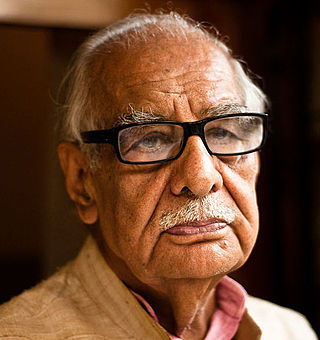
Kuldip Nayar was an Indian journalist, syndicated columnist, human rights activist, author and former High Commissioner of India to the United Kingdom noted for his long career as a left-wing political commentator. He was also nominated as a member of the upper house of the Indian Parliament in 1997.

Ram Prasad Bismil was an Indian poet, writer, and revolutionary who fought against British Raj, participating in the Mainpuri Conspiracy of 1918, and the Kakori Conspiracy of 1925. He composed in Urdu and Hindi under pen names Ram, Agyat and Bismil, becoming widely known under the latter. He was also a translator.

Harsh Mander is an Indian author, columnist, researcher, teacher, and social activist who started the Karwan-e-Mohabbat campaign in solidarity with the victims of communal or religiously motivated violence. He is the Director of the Center for Equity Studies, a research organisation based in New Delhi. He also served as Special Commissioner to the Supreme Court of India in the Right to Food Campaign and was a member of the National Advisory Council of the Government of India, set up under the UPA government.
Hindustan Socialist Republican Association (HSRA), previously known as the Hindustan Republican Army and Hindustan Republican Association (HRA), was a radical left-wing Indian revolutionary organization, founded by Sachindranath Sanyal. After changes in Bhagat Singh's ideology and the influence of the Russian Revolution, they held meetings in Feroz Shah Kotla Maidan and added the word socialist to their name. Ram Prasad Bismil, Ashfaqulla Khan, Sachindra Nath Bakshi, Sachindranath Sanyal and Jogesh Chandra Chatterjee were the leaders of the group at the time. HSRA's manifesto titled The Revolutionary and written constitution were produced as evidence in the Kakori conspiracy case of 1925.

Batukeshwar Dutt was an Indian socialist and independence fighter in the early 1900s. He is best known for having exploded two bombs, along with Bhagat Singh, in the Central Legislative Assembly in New Delhi on 8 April 1929. After they were arrested, tried and imprisoned for life, he and Singh initiated a historic hunger strike protesting against the abusive treatment of Indian political prisoners, and eventually secured some rights for them. He was also a member of the Hindustan Socialist Republican Association.
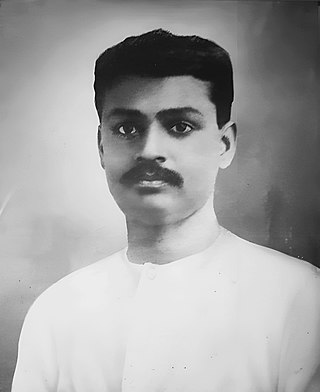
Sachindra Nath Sanyal was an Indian revolutionary and co-founder of the Hindustan Republican Association that was created to carry out armed resistance against the British Empire in India. He was a mentor for revolutionaries like Chandra Shekhar Azad, Jatindra Nath Das, and Bhagat Singh.
1915 Lahore Conspiracy Case trial or First Lahore Conspiracy Case, was a series of trials held in Lahore, and in the United States, in the aftermath of the failed Ghadar conspiracy from 26 April to 13 September 1915. There were nine cases in total. The trial was held by a Special tribunal constituted under the Defence of India Act 1915.

Arpita Singh is an Indian artist. Known to be a figurative artist and a modernist, she made her canvases to have both a story line and a carnival of images arranged in a curiously subversive manner. Her artistic approach can be described as an expedition without destination. Her work reflects her background. She brings her inner vision of emotions to the art inspired by her own background and what she sees around the society that mainly affects women. Her works also include traditional Indian art forms and aesthetics, like miniaturist painting and different forms of folk art, employing them in her work regularly.

The 1984 anti-Sikh riots, also known as the 1984 Sikh massacre, was a series of organised pogroms against Sikhs in India following the assassination of Indira Gandhi by her Sikh bodyguards. Government estimates project that about 2,800 Sikhs were killed in Delhi and 3,350 nationwide, whilst other sources estimate the number of deaths at about 8,000–17,000.
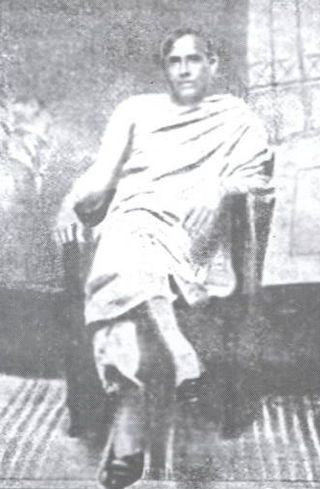
Jatindra Nath Banerjee was one of two great Indian nationalists and freedom fighters – along with Aurobindo Ghosh – who dramatically rose to prominence between 1871 and 1910.
Harbans Lal Khanna was a BJP MLA and president of its Amritsar district branch in Punjab, India.

The Guru Granth Sahib, is the central religious text of Sikhism, considered by Sikhs to be the final sovereign Guru of the religion. It contains 1430 Angs, containing 5,894 hymns of 36 saint mystics which includes Sikh gurus, Bhagats, Bhatts and Gursikhs. It is notable among foundational religious scriptures for including hymns from writers of other religions, namely Hindus and Muslims. It also contains teachings of the Sikh gurus themselves.
On September 4, 1985, at 9:20 am member of the Delhi Metropolitan Council, close associate of Sanjay Gandhi, and Congress leader Arjun Dass was assassinated by 3 Sikhs in Delhi. The assassins were Harjinder Singh Jinda, Sukhdev Singh Sukha, and another member of Jinda's group. They killed Dass in revenge for his role in the 1984 anti-Sikh riots. Along with Arjun Dass his bodyguard, a constable, was killed and 6 others were injured.













